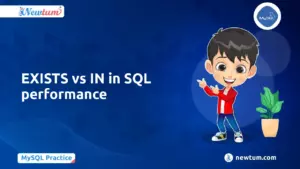Welcome to our blog on “Odd Even Program in Python.” Understanding odd and even numbers is fundamental in programming. It’s essential for decision-making in algorithms and game development. Let’s explore how to implement this logic effectively using Python.
What is the Odd-Even Program?
The odd-even program checks if a number is odd or even. A number is even if it’s divisible by 2 with no remainder, like 4, 6, or 8. If there’s a remainder when divided by 2, the number is odd, such as 3, 5, or 7.
Requirements
- Ensure you have Python 3.x installed on your system.
- Use a text editor or IDE for coding. Recommended options include VS Code, PyCharm, or even IDLE, which comes with Python.
Code for Odd Even Program in Python
This Python code determines whether a given number is odd or even:
# Odd even program in Python
num = int(input("Enter a number: "))
mod = num % 2
if mod > 0:
print("This is an odd number.")
else:
print("This is an even number.")
Explanation of the Code:
- It starts by prompting the user to input a number, which is then converted to an integer using `int()`.
- The variable `mod` stores the remainder when the number is divided by 2, using the modulus operator `%`.
- Next, an `if` statement checks the value of `mod`. If `mod` is greater than 0, it means the number is not divisible by 2 and is therefore odd, so the program prints “This is an odd number.” If `mod` is 0, the number is divisible by 2 and is even, so the program prints “This is an even number.” This simple logic efficiently identifies odd and even numbers.
Output:
Enter a number: 48
This is an even number.Handling Edge Cases in the Odd Even Program in Python
Edge cases, which refer to scenarios where inputs are at the extreme ends or unconventional inputs that may not typically occur, are handled as follows by the Odd Even Program in Python:
- Zero:
- Input: 0
- Output: This is an even number.
- Explanation: Zero is evenly divisible by 2, resulting in a remainder of 0. Therefore, it is classified as an even number.
- Negative Numbers:
- Input: -2
- Output: This is an even number.
- Explanation: Negative numbers can also be classified as odd or even based on their divisibility by 2. In this case, -2 divided by 2 gives a remainder of 0, hence it is even.
- Large Numbers:
- Input: 987654321
- Output: This is an odd number.
- Explanation: The program can handle large numbers efficiently. For example, 987654321 divided by 2 gives a remainder of 1, indicating it is an odd number.
- Floating Point Numbers:
- Input: 3.14
- Output: This is an odd number.
- Explanation: The program automatically handles inputs converted to integers. In this case, 3.14 would be converted to 3 and classified as odd.
- Non-Numeric Inputs:
- Input: abc
- Output (with appropriate error handling): Invalid input. Please enter a valid integer.
- Explanation: The program should include error handling to gracefully manage non-numeric inputs, providing feedback to the user for correction.
Handling edge cases ensures that the Odd Even Program in Python remains robust and reliable across various input scenarios, thereby enhancing its versatility and practical utility in different programming contexts.
Real World Applications
The odd-even logic, while seemingly basic, has several practical applications across various programming domains:
- Sorting Algorithms:
- Odd-Even Sort: This sorting algorithm is based on the odd-even concept and is a variation of the bubble sort. It sorts elements by comparing adjacent pairs of elements. During odd iterations, it compares elements at odd indices with their next neighbor, while during even iterations, it does the same for elements at even indices. This method is used in parallel computing environments where sorting operations can be performed concurrently on different parts of the data set.
- Game Development:
- Turn-Based Games: In turn-based games, the odd-even logic determines alternating turns between players or AI opponents. For example, if the turn number is odd, Player 1 may take a turn, and if even, Player 2 may take a turn. This ensures fair gameplay mechanics and systematic distribution of actions based on numeric conditions.
- Simulation and Modeling:
- Cycle Management: In simulations and modeling scenarios, such as traffic simulations or industrial processes, odd-even logic can be used to manage cycles or phases. For instance, traffic lights may switch between red and green lights based on odd or even cycles, ensuring efficient traffic flow management.
- Conditional Statements and Control Systems:
- Control Systems: In control systems, the odd-even concept can determine conditional logic for regulating processes or actions. For example, in manufacturing automation, odd or even conditions may trigger specific operations or sequences in production lines.
- Mathematical Computations:
- Number Analysis: In mathematical computations and analyses, determining whether numbers are odd or even is crucial for various calculations and algorithms. It helps in dividing data sets or performing specific operations based on the parity of numbers involved.
- Educational and Learning Tools:
- Teaching Programming: The odd-even program serves as a foundational example in teaching programming concepts to beginners, thereby introducing basic conditional statements and logical operations in a straightforward manner, consequently helping learners grasp fundamental principles of programming logic.
These real-world applications highlight the versatility and significance of the odd-even logic in programming, thereby demonstrating its utility across different fields such as optimizing processes, enhancing decision-making capabilities, and facilitating efficient computational operations.
In conclusion, exploring the Odd Even Program in Python has provided insights into fundamental programming concepts and their practical applications. Learners can enhance their coding skills and problem-solving abilities significantly by mastering these methods and best practices.Visit Newtum for comprehensive programming resources and courses in various languages like Java, HTML, and C, designed to support your learning journey with user-friendly content. Happy coding!



